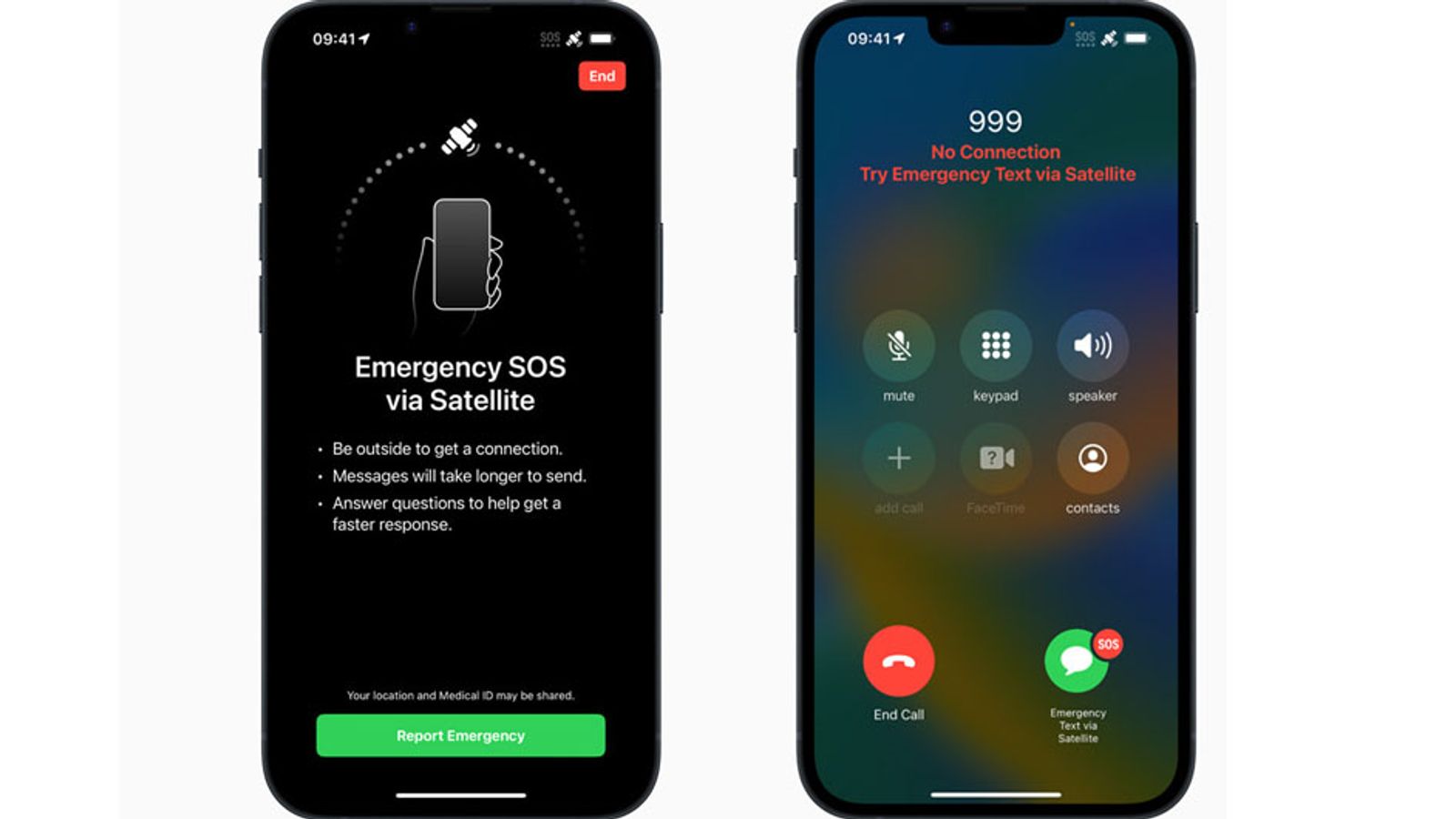People with the latest iPhone can now contact emergency services when they have no phone signal or Wi-Fi.
The feature uses satellite to send a message to Apple specialists who then contact relevant authorities.
The same technology also means users can let loved ones know their location in signal dead spots using the existing Find My app.
All new iPhone 14 models now have the features, with people in the UK, Ireland, France and Germany the first to benefit. More countries will follow next year.
Apple says the “game-changing” connection to satellite is possible due to “custom-designed components and deeply integrated software”.
John Anthony, the British Association of Public Safety Communications Officials’ president, said the feature would “help save lives”.
iPhone users can already get emergency help by doing a long press on the power or volume button, or quickly pressing the power button five times.
Other devices, such as the Google Pixel, have similar emergency features and shortcuts, but satellite capability normally requires a specialised handset.
How does it work?
The satellite feature kicks in when someone tries to call 999 but can’t get a signal. A screen will then prompt them to answer a few short questions about the situation.
They are told where to point the phone to connect to satellite, with all the details sent to Apple specialists who then contact emergency service call centres.
Apple says messages can be sent in as little as 15 seconds in clear weather conditions.
A demo version of the feature is available so that people can test it out without actually summoning help.
The iPhone 14 also has a crash detection feature that senses when someone may have had a road accident and calls first responders – again a capability shared with some other handsets.
However, some users reported in October that it was being triggered when they were on rollercoasters.
